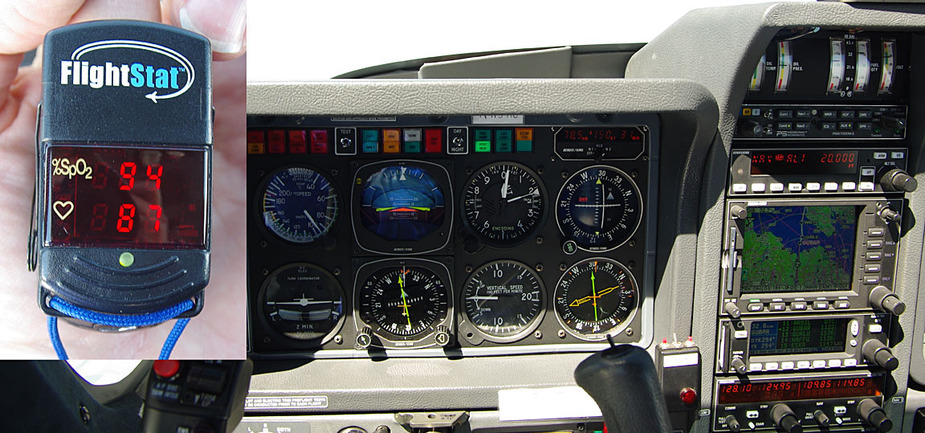I have never tried to do it that is why I am asking.
Obviously you can’t just point the nose up and go for it at a fixed VS or a fixed pitch. That just gives you a stall at some sub-optimal altitude. If one had an autopilot which can maintain a VS very accurately, with say a 10ft/min resolution, then one could use that, but mine is 100fpm resolution which is too coarse. Another way is to climb at a fixed pitch and that works better for going high up (in PIT mode and with the pitch being gradually reduced using CWS) but is also sub-optimal.
I have AOA on the AFS screen in the Falco.
I’m still getting used to the glass cockpit and have only recently had the spare capacity to observe it. What I have noticed is that it gives me very early warning of elevated alpha in slow turns, which in itself is useful. I’m also experimenting with best glide speed but early indications are that it shows about 5kt more than the expected ideal.
At this early stage I’m liking it but don’t have enough data to recommend it.
These AOA indicators seem to use two tubes, on different positions on the leading edge of the wing. I wonder who works out which exact locations on the leading edge should be used? The website doesn’t describe it.
One brand I was reading about (can’t remember which one) requires in-flight calibration…..one data point is the stall I think and the other is by unloading the wings to zero lift….ie push the nose over until stuff just starts to float….IIRC
What I have noticed is that it gives me very early warning of elevated alpha in slow turns
In the other thread I questioned the usefulness of these devices, and I still struggle to find one that puts a value of £2000+ on it. But it looks like there is a case where near or at your service ceiling, you will be nose up, and a low IAS, and IF you then did a turn maybe you have exceeded your AoA limit (what I presume you call “alpha”).
This might then be a use, but does this mean that a GA aircraft at service ceiling, doing anything more than a 15 degree turn is likely to enter a stall, or is the likelihood slimmer?
Yes – very much so.
When at/near the ceiling you need to do very slow turns, which incidentally rules out the simple use of the autopilot to do a turn because that will just whack in a Rate 1 turn i.e. about 20 degrees.
However, once you reached what you regard is the ceiling, and then level off, the speed goes up to something fairly reasonable. For example at FL200 the IAS might be about 95kt. From a trip a while ago, here is an old pre-EHSI pic:

The TAS would have been about 135kt.
It is the climb up there which is hard. There is a very steep trade between required excess power, and rate of climb i.e. the excess power needed to climb at say +50fpm would give you quite a nice speed in level flight. The best way I have found so far is to use the autopilot in PIT mode and manually tweak the pitch up, until the stall warner comes on. It seems the highest pitch which is practical is about 10 degrees.
However it’s not clear whether this relates accurately to where the wings sit i.e. I don’t really know whether a zero pitch indication on the EHSI (which itself comes from the SG102 AHRS gyro which is mounted on a Socata-provided gyro (KG102A) platform) corresponds to a zero AoA on the wings.
How would you reach the operating ceiling?
Climb at VY until the climb rate drops to 0 (or 100fpm or however you define ceiling)?
Now the question is what is VY. It comes down a bit when altitude increases, but AFMs usually only publish an average. I guess Roskam is your friend.
Climb at VY until the climb rate drops to 0 (or 100fpm or however you define ceiling)?
In a TB20, that will
 and
andSo one has to start at 120kt (for CHT reasons) and hold that until one can’t – typically FL150 or so.
I couldn’t do anything with your first link. What is it?
If your mission is “how high can I go without melting the cylinders” I do not think an AoA sensor is essential, rather a CHT.
The (only?) advantage of the AoA is that it will help maintaining an optimum “wing performance mode” even as the weight decreases (due to fuel burn).
But in reality
1- I believe using airspeed will work just as well, because fuel burn is so slow;
2- weight is not the only thing that changes during climb. Prop thrust will also decrease, possibly altering prop efficiency, downwash and other slipstream effects. It is for these reasons that IAS for Vy reduces as you climb.
I would just climb at full power flying an airspeed that will give the highest CHT that I could accept. Of course, if it turns out that the cylinders will not “melt” after all, then maintaining Vy by constantly varying IAS a little would be necessary.
To go high, mixture has to be kept at that for best power. Of course that requires incremental leaning during the climb. The power curve is rather flat around best power, but to establish the true ceiling a mixture very close to best power is essential, as excess power is down to fractions of a horsepower eventually.
It all requires attention, patience and very, very tiny and accurate control inputs.
I think that would be the case with or without an AoA sensor.